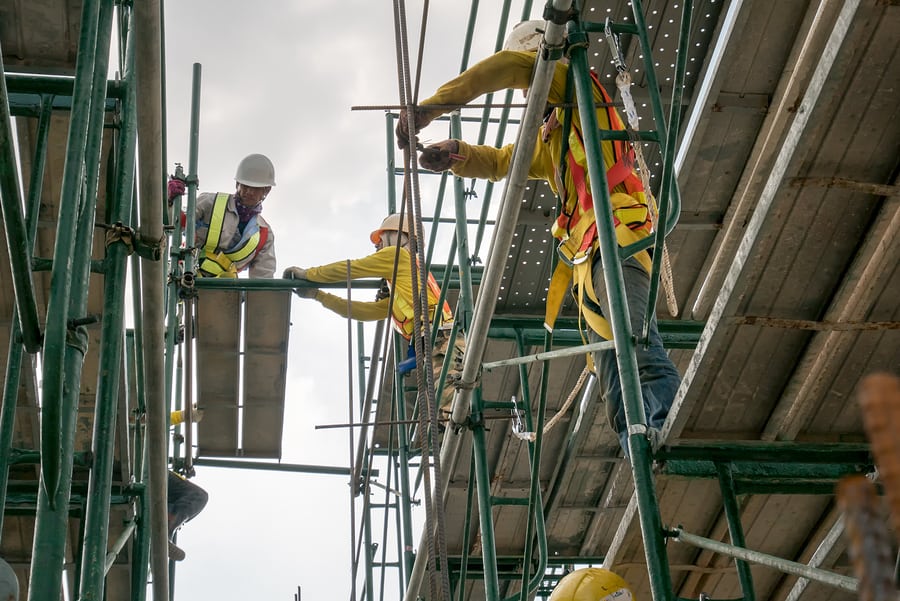Working in construction has undergone a dramatic change over the last 60 years. Since the 1960s and 1970s, when safety wasn’t the highest priority, construction work has transformed by introducing a whole host of new safety precautions.
However, whilst the precautions account for a large number of the risks associated with working in construction, they haven’t eliminated every danger from the industry. In 2015, according to the Bureau of Labor Statistics, 937 workers were killed in construction, accounting for 21.4% of the full total of worker fatalities in that year. This number is higher than in any other industry sector and marks the highest number of construction fatalities since 2008.
Breaking Down the Statistics
While the full number of fatalities is shocking, when you break it down, the statistics become even more alarming. Those 937 fatalities mean that 18 people a week never came home from work. Tragedies that didn’t have to happen.
To combat the unnecessarily high number of fatalities, more focus needs to be directed towards improving safety conditions – more so than what has already been done. If safety measures aren’t constantly improving, then there is the risk of bouncing back to the days of incredibly poor safety measures.
A Risk That is Rising
The need for heightened measures for safety becomes even more critical when accounting for the increase in workers within the construction sector. 2015 saw the highest level of construction employment since 2008, with 75% of firms having plans to extend their workforce.
The combination of higher amounts of work and increased wages in the construction industry, make improving safety a top priority. This is especially prominent as the heightened demand has led firms to hire workers that are not as qualified or are experienced primarily in different industries.
To combat the growing issue of risk for construction workers, education and training on a continuous basis have become very important.
Construction Training
One of the most important aspects of modern construction safety training is centered around the ‘Construction Focus Four’. The Construction Focus Four are hazards that have been identified as the most prominent by OSHA. These consist of:
- Caught-in/between – accounting for 67 construction fatalities in 2015
- Electrocution – accounting for 81 construction fatalities in 2015
- Struck-by – accounting for 90 construction fatalities in 2015
- Falls – accounting for 364 construction fatalities in 2015
With the vast majority of the accidents, 602, being a direct result of the Construction Focus Four, the emphasis is being put on continuous training – reaching as many small-to-medium sized construction contractors as possible. By directing training at small-sized contractors and subcontractors, the aim is to assist those who otherwise might not have ample resources to do so themselves.
Reducing Risks Through Ongoing Training
Training that continues into the workplace and beyond is of the upmost importance when reducing safety risks. This includes new-employee/experienced-employee mentoring and buddy systems, that can help all construction workers at every level.
Being aware of what other workers are doing and responding with help and assistance is key in making sure that everyone stays safe on the job. Certain programs have been developed to help enforce this through encouragement and rewards, such as the ‘Thumbs Up for Safety’ program.
The program introduces the ‘Countdown to Safety’, which is designed to help workers identify potential hazards and address them. These engaging programs go one step further than the standard rulebook, helping employees to work in a lower risk environment and construction firms put safety as a top priority.
There is still a lot of work to be done, but it seems that the construction industry is starting to make serious positive changes.
Interested in topics about health and safety in construction, and want to learn more about health insurance in the construction industry? Contact us at any time for any insurance questions you might have.



